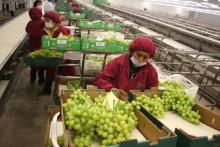On Tuesday, central bank figures showed new bank lending in July fell to a 15-year low, while other key indicators signaled export growth slowed and industrial activity fell as manufacturers grapple with weak domestic demand.
A recent string of disappointing economic indicators has dampened expectations for China's economy in July, boding badly for the rest of 2024 and pointing to the need for more stimulus measures as well as solutions to the problems of the world's second-largest economy.
Calls for more measures to boost growth in the $19 trillion economy have dogged policymakers after a post-pandemic recovery failed to materialize in 2023. Still, the government is targeting growth of around 5% this year.
The latest data point to a troubled start to the second half of the year. On Tuesday, central bank figures showed new bank lending in July fell to the lowest level in 15 years, while other key indicators signaled export growth slowed and industrial activity fell as manufacturers grapple with weak domestic demand.
The economy had already grown more slowly than expected in the second quarter, expanding 4.7% from a year earlier as cautious consumers remained reluctant to spend and trade ties with major markets grew more strained, suggesting a period of prolonged slowdown is increasingly likely.
"The market consensus will move to the left side of the 'around 5%' growth target as the economy slowed in July and there seems to be a lack of a vigorous plan to support the economy," said Xu Tianchen, a senior economist at the Economist Intelligence Unit, which has maintained its growth forecast at 4.7% since March.
China is due to release a raft of activity data on Thursday. Economists polled by Reuters expect retail sales to have grown 2.6% year-on-year last month, up from 2.0% in June, while industrial output is expected to have grown more slowly and investment growth to have stabilised.
Authorities will also publish the latest reading on new home prices, which fell at the fastest pace in nine years in June despite a raft of support measures aimed at luring buyers back and stemming a protracted housing crisis.
Credit data this week showed household loans, mainly mortgages, contracted by 210 billion yuan ($29.37 billion) in July, compared with an increase of 570.9 billion yuan in June.
One of the main reasons people are not spending in China is that 70% of household wealth is concentrated in real estate, a sector that has long been a major driver of growth.
One of the few bright spots this year, exports, has so far failed to spark a broader economic recovery, largely because manufacturers have had to cut prices to find buyers abroad amid weak domestic demand.
And there are signs that global demand is slowing. The official survey of factory managers in July showed that producers received fewer export orders for the third month in a row.
To be sure, after a surprise cut in short-term interest rates in July, many economists are predicting further interest rate cuts in China later this year, especially if the Federal Reserve starts to reduce US borrowing costs from September. But with domestic demand so weak and the outlook unclear, households and businesses are in no hurry to borrow.
"There is definitely a possibility that the authorities will rush to announce a clearer plan to stimulate domestic consumption as they seem particularly concerned about weak domestic demand recently," Xu said.










